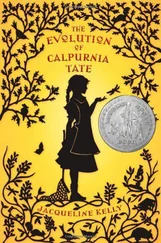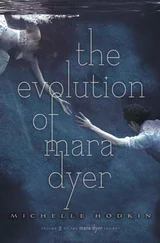My mother grunted at her and suspiciously licked a glob of filth off of her thumb. My mother always knew I had a thing for human girls, and strongly, strongly disapproved of it. Of course, it was difficult for even me to tell precisely what my mother was thinking because she was so disastrously inarticulate. Like most chimps, hers was a vocabulary consisting entirely of signs — grunts, gestures, noises, postures, faces, and so on — signifiers with amoebic and inconstant sets of signifieds depending entirely upon the ephemeral context of the immediately present moment. She had in her communicative arsenal not one thing that could truly be called a word, which I think of as a sort of compact ball of signification — the use of which can change depending on the situation, but the meaning of which is firmer and less psychologically elastic than a nonlinguistic sign. Yes, conversations between chimps certainly do occur, thoughts of a certain sort are indeed communicated between them, but it would be absolutely impossible to translate them into human language, because these nonlingual conversations occur outside the sphere of activity that is capturable by the tools of the text; these communications happen entirely within the Theatre of Cruelty, within the realm that is ineffable, a dreamlike mode of communication halfway between thought and gesture, based not in words but in mentality and physicality, in the raw language of the nonsymbolic sign.
I suppose the time to divulge the nature of my earliest sexual stirrings is now, Gwen. I had not yet come into full sexual maturity at this time. As I said, I think I was about six years old. Chimps — especially those in captivity — reach puberty at a younger age than humans. I was an unusual case. I always have been.
The other chimps in the zoo were perfectly content to mate among their own species — it seemed only natural; I don’t think any of them really even gave it any serious thought. But even my earliest sexual proclivities lay elsewhere. My father couldn’t have cared less, but I believe my mother found this — in her view— perversion of mine deeply disturbing.
There was only one female chimp close to my age living in the habitat: little Céleste. I will describe Céleste for you carefully, because she played an important part both in the development of my early consciousness and in landing me in my current situation. I gather that it was hotly anticipated and hotly hoped among the zoo management that either I or else my elder brother, Cookie, would one day couple with Céleste and impregnate her, thereby furnishing the Lincoln Park Zoo with additional chimps. Céleste was acquired from the Indianapolis Zoo when she was two years old and given to our poor aunt, who was as barren as Sarah, to raise as her own. (Keeping us apart for the first two years was a bulwark against the Westermarck effect, so that one day we might find each other sexually appetizing, as we had not been desensitized in early childhood to one another’s pheromones.) So Céleste was introduced to me when she was two years old, and I was three and a half.
Céleste never particularly bonded with Cookie, who was about eight years old at the time and much bigger than us, and was habitually boorish, brutal, and crude with her (Cookie took after our father in all the worst ways); but Céleste and I developed an adamantine emotional bond, a connection, primitive and deep, that needed no words to express it and needed none to understand. We often cuddled together in a warm tangle of slender hairy limbs, and, our two hearts, each the size of an avocado pit, beating softly in unison within a physical proximity of mere centimeters and our lazy young brains dopey with the natural tranquilizers of childhood love, we would fall asleep, in a nest of rushes, in a hot band of Chicago sunlight streaming through the window. Together, Céleste and I sweetly aped the bonding activities that we saw the grown-ups performing: with her fingers she would delicately pick the bugs and crumbs and weeds out of the fur on my back, and then she would turn around and let me do likewise unto her. We explored every inch of our habitat, Céleste and I, together we overturned everything in it that could be overturned, our young minds’ cups brimming over with environmental stimuli, the mysteries of existence rushing headlong into our eager consciousnesses.
I will relate one brief incident from my early childhood with Céleste, one of the few definite memories from this time in my prelinguistic life that I still carry with me, secreted away somewhere deep in the squiggly crevices of my tender electric brainflesh. I was playing with Céleste. We were playing with a hat. I don’t know how it got into our habitat in the first place — it must have come in the same way as the frog, these curiosities, these artifacts from the outside world that accidentally wandered in to become such important semantemes in the early development of my consciousness. Most likely the wind had blown this hat off of the head of a zoogoer, across the moat, and into our habitat — this being the one American city to claim the apropos moniker of “the Windy.” But this hat — I now realize, as I reconstruct the memory knowing what I now know — was a woman’s hat, a woman’s sun hat. It was beige, wide-brimmed, shallow-crowned and flat, made of straw — tightly woven slats of thin shiny straw. It was festive, festooned with a wide band of diaphanous silk on which was printed a design of blue and red and purple flowers, which wrapped around the crown of the hat and was secured in place with a bow. Perhaps at the time Céleste and I imagined — as I now imagine — that this hat had previously lived on top of the head of a beautiful woman. There were even — as I recall — a few long threads of human hair caught in the interstices of the hat’s weave, possibly red hair, almost invisible except upon close viewing, sleek and strong, as long as my forearm and well-nigh impossible to break with the hands. This hat was a magical object to us, a portent from the gods lying on the ground: beautiful, weird, otherworldly, bright.
Two young chimps, looking at a hat lying on the grass of their habitat. One, Céleste, the younger, is smaller with very dark fur, and her big ears stick far out of her head like wingflaps. The other, Bruno, the elder, has lighter and coarser reddish fur that he has inherited from Red Peter, his father, and smaller ears that lay flatter against the sides of his head. Both of them have the round heads and snowy beard-tufts of preadolescence.
At first we were a little afraid of it. What is this thing? Whence did it come? We look up — we cast our humble gazes upon the foreboding thing we have seen every day of our brief existences: the Wall. Massive, starkly unadorned and unreachable, the cold, gray, steeply sloping bowl of concrete, over and beyond which lies the unknown part of the universe. This must have come from beyond the Wall, a place purported to exist, but for which we have as yet no a priori proof. The only things we know exist are the ones we see marching past the Wall. Are they the things of this world, or only their shadows? We don’t know. But the hat: this is no shadow of a hat, this is a hat itself. Only we do not know that it is called “hat.” We do not know what it is. We do not know what it does. Is it friend or foe? For a while we observe the hat from a safe distance. Then I, the young Bruno — who at this point is simply another baby chimp of no particularly remarkable genius — warily approach the thing. A hand reaches out, followed by a thin hirsute arm — to touch it. I only barely brush the edge of the object with the tips of my fingers, and reflexively jerk my hand back at once. Wait!.. It did me no harm, no harm. Tentatively, tentatively, the hand reaches out to touch it again. The hand makes contact, and there it remains. Emboldened, I go so far as to pick it up. Céleste approaches now. She places her head on my right shoulder, looks on at the thing, which is now in my hands — my God! — it’s so light, nearly effortless to lift. Céleste puts her hand on the brim of the hat. We touch it together, peacefully, we explorers, we two little scientists, we run our fingers along its contours, its edges, its angles, its convexities and concavities, feeling its texture, the taut bouncy waxen feeling of the tightly woven lacquered straw, the smooth and delicate feeling of the silken hatband, bespangled with the images of blue and red and purple flowers.
Читать дальше












